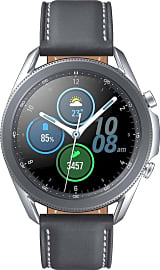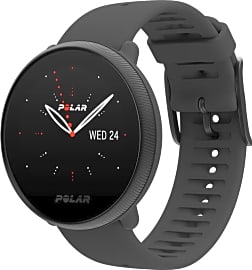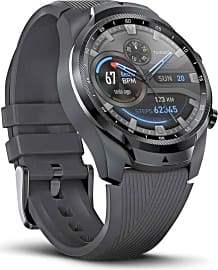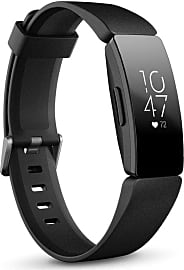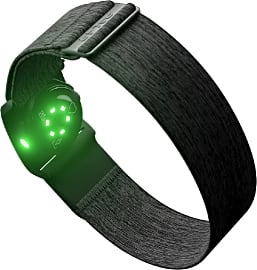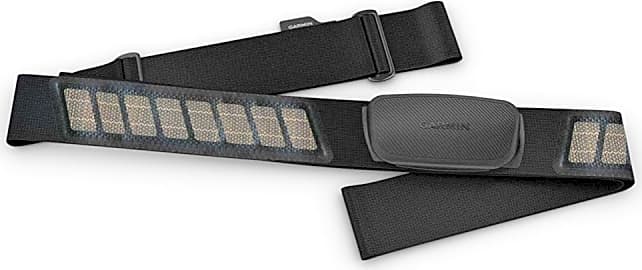The 8 Best Heart Rate Monitors

This wiki has been updated 43 times since it was first published in March of 2015. With the technology available today, athletes can get into their target heart rate zones and stay there, maximizing the effectiveness of their workouts without putting undue stress on their bodies and their cardiovascular systems. That results in shorter recovery times and more efficient training. We've selected a wide range of monitors that can provide you with a plethora of useful data. When users buy our independently chosen editorial selections, we may earn commissions to help fund the Wiki.
Editor's Notes
July 09, 2021:
We made a small handful of important changes to this version of the rankings. The Apple Watch Series 6 is a clear winner because it integrates a variety of advanced technologies to provide the most in-depth health-related data of anything on the market. If you don't need that kind of in-depth data, the Wahoo Tickr X is a much less intrusive device in terms of size and weight.
Similar to the Apple Watch, the Samsung Galaxy Watch 3 is a powerful, full-featured smartwatch with great tracking support. We also like the Ticwatch Pro because while it doesn't offer quite the same smartphone integration, its Google Wear OS makes it still a very useful watch.
January 14, 2020:
As the smartwatch and fitness tracker sector continues to innovate in heart rate monitoring technology, most consumers have become comfortable with and confident in optical capillary heart rate readings, and have come to expect their monitors to perform any number of additional tasks, from providing complex workout algorithms to produce calorie data and recovery recommendations to the things you'd expect from the average smartwatch like call, text, and email alerts.
Almost all of the models on our previous list have been upgraded or replaced with superior offerings by the same company, like the Polar Ignite Advanced that took the place of the Polar A360 Fitness and the Polar Fitness FT7 from our old ranking. Both were fine models, but the Ignite is more in line with the best tech available today, and it takes optical readings a step further by combining them with bio-impedance electrodes positioned next to the device's LEDs.
There are still chest strap sensors that remain viable thanks to their integration with smartwatches and smartphones, and one product, the Polar Vantage V Multisport, offers both the chest strap and smartwatch in a single package, allowing users to track things like their sleep quality and daily activities with the wrist-worn device, then toss on the chest strap for more detailed readings during workouts.
Hit The Target
To calculate your own target heart rate, you first have to find your maximum heart rate, which is 220 minus your age.
There's a specific point of exertion at which you maximize your body's potential to lose weight, tone muscle, improve cardiovascular health, and feel pretty amazing. I'm talking about your target heart rate. When you exercise, this is the number of heartbeats per minute for which you should aim.
To put this in perspective, let's hit the ice. When I was 26, I strapped a heart rate monitor to my chest to find out what my average rate was over the course of an ice hockey game, as well as where the rate peaked, how many calories I burned, etc. Most heart rate monitors will give you this level of feedback once you've input things like your age, weight, resting heart rate, etc. They do the math for you.
To calculate your own target heart rate, you first have to find your maximum heart rate, which is 220 minus your age. Why 220? The doctor says, that's why. So, when I was 26, my maximum heart rate was 194 (220-26=194). Then, you multiply this number by 70 to 85 percent, which will give you a target heart rate zone. Ice hockey's a pretty rigorous sport, so let's err on the side of intensity at 85 percent. That's a target heart rate of 164.9 beats per minute (194x.85=164.9).
After approximately 30 minutes of ice time (which is half the game on the ice, half the game catching my breath on the bench), I'd burned over 1200 calories, averaging 167.8 beats per minute, higher than my target heart rate zone. My heart rate peaked at 205 beats per minute, higher than my maximum heart rate. Since the average was only a few ticks higher than the target zone, I wasn't in too much danger, but that includes an entire half of the game spent sitting on the bench, which means a lot of time on the ice was spent at, around, and above my maximum hear rate. But, hey, I was 26!
Keeping an eye on stats like these is vital, especially as we get older. Daily exercise is one of the most important contributors to a long and healthy life, but we have to make sure to exercise in ways that aren't doing more harm than good, and the constant, pinpoint feedback provided by a heart rate monitor can do that.
The Chest Or The Wrist
You may have noticed that a small, colored light glows from the underside of a lot of these wrist strap health monitors. I first noticed this on my friend's Apple watch, as a strange, tiny green light emitted from the underside of the watch and onto his skin.
It turns out, this is one of the two ways that heart rate monitors measure your beats. The LED method, as described above, is called optical heart rate monitoring, and choosing between this method and the more traditional chest strap heart rate monitor is your first step in narrowing down our list to find your prefect workout pal.
The advantage of this type of monitor, of course, is its convenience.
An optical heart rate monitor uses a focused LED to illuminate your capillaries, measuring their expansion and contraction as beats over the course of time, giving you a (theoretically) accurate reading. The big problem with optical heart rate monitors at this point in their development is that they often require stillness to garner a reading, as movement, sweat, muscle tension, etc. will interrupt the accuracy of the light feedback.
That means that you can't get a consistent or accurate readout over the course of a long workout, giving you less data to mine after the fact, which makes it harder to adjust your routine to its ideal zones. The advantage of this type of monitor, of course, is its convenience. If you merely want to check in with your heart rate should you feel a workout getting too intense, and also utilize all the other features included in an optical monitor (pedometer, oscillator, etc.), these should serve you just fine.
If, however, you're trying to get the most accurate and consistent readout of a workout from start to finish, with all the attendant data and timing, you'll want to strap a heart rate monitor around your chest. These work more like traditional ECG machines, in that they measure the electrical impulses that cause your heart to beat, rather than the beats themselves. They're a little clunkier, and they're significantly less comfortable, but the results are head and shoulders above those you'll find in an optical device.
Starting At The Finnish
While the first ECG as such appeared in St. Bartholomew's Hospital in the 1870s, it would be over 100 years before the technology became wireless. Some athletic programs used portable ECG machines that still required the use of wired electrodes on through the 1970s, but the Finnish National Cross Country Ski team got their hands on an early wireless prototype in 1977.
By the 1980s, an explosion in the popularity of intensity training spurned on the development of wireless heart rate monitors for the everyday consumer. Since then, the impossible heights of the Western beauty standard have only become more impossible to reach on any end of the gender spectrum.
As a result, the health and fitness industry sees its profit margins growing every year, and devices like FitBit, simply by presenting themselves as a status symbol for the health-conscious, continue to push the technology forward.



